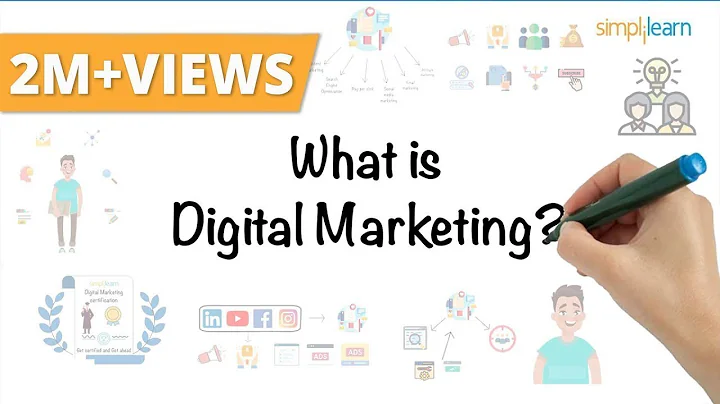Editor's Introduction: Private domain refers to the ability to operate customers, which has become one of the core capabilities of enterprises and brands. Now it is also an important part of social e-commerce, which requires enterprises to have the core ability to operate customers. The author of this article has analyzed this and hopes it will be helpful to you.

What is the private domain? To borrow an explanation from Baidu Encyclopedia, the private domain refers to the ability to operate customers and has become one of the core capabilities of enterprises and brands.
In the era of digital economy, the core goal of enterprises is to truly value and own "customers", the most valuable asset, from the perspective of property rights, and to continuously improve their ability to create richer value for each customer. This explanation does not give an overview of the private domain itself, nor does it emphasize the relationship between the public domain and the private domain, but it gives a very rich and vivid definition: enterprises need to have the core capabilities of and to operate customers. The operation of
private domain tests the improvement of the enterprise's comprehensive capabilities.
I think the private domain is a business management method that breaks away from platform centralization. In the public domain scenario, merchants only need to prepare the supply chain, brand, and products, and be able to operate the backend functions to do business. At most, operating a brand store also requires platform operations and customer service. However, in the private domain operation mode, merchants need to do all the things originally done by the platform in addition to the above, such as operations involving new recruits, conversions, retention, and repurchase. Under the centralized management method of
, because the platform stands from its own perspective, it will produce strategies that are beneficial to itself. For example: when this customer comes, just convert it, and I can earn commissions from whomever I convert to, who are all customers of my platform. . But the purpose of private domain operation is: I want to firmly grasp every customer and convert them into my own brand.
Regarding the customer-centered operation method of the private domain, Youzan explained in detail at the Monero conference what data transformation needs to be focused on if the private domain is to be done well. I also did a vernacular version analysis of this ppt content. , if you are interested, you can search the public account "Product Miscellaneous Talks" to view historical articles, and you can find them easily.
In fact, this is also a challenge faced by many companies. Only if you have long-term operating capabilities can you create a long-term brand. Therefore, when doing business in the private sector, what is examined is the comprehensive capabilities of the enterprise.
Let’s make a digression:
For enterprise private domain service providers, when we empower private domains, we can’t just focus on helping merchants become private domain marketing tools, nor can we just focus on private domain access. , it is necessary to combine the industry and the company's operating model to propose methods that can help merchants reduce costs, improve efficiency, and increase business growth, and finally implement it into a SaaS tool. The SaaS tool can be regarded as a medium that conveys the relationship between SaaS service providers and merchants. Business discussions.
Here I borrow a sentence from the article of Mr. Wang Daiming, a toB veteran. The essence of B-side software is management concepts and management methods. Let me make a slight change. The essence of B-side software is the business management concept and business management methods. The business management here includes the company's internal business management and the business management of customers. The process of an enterprise developing a private domain is also a process of improving its own operating capabilities. Digitalization is a necessary means to improve its operating capabilities, so private domain + digitalization come at the same time, which is a very big challenge for enterprises.
A successful company under the platform model needs to supplement its customer operation capabilities and have the ability to grow itself.
In this way, companies that have strong comprehensive capabilities and can be the first to make achievements in the early private domain must be companies that have already achieved certain results under the centralized traffic model. The basic supply chain, internal management, and brand building of these enterprises are relatively mature. What these enterprises need to complete is how to better expand channel traffic and improve customer satisfaction in the private domain. Operations management, while doing a good job in marketing and operations related to customer growth.
1. About social e-commerce
We have talked clearly before, now let’s talk about the original practitioner of private domain – social e-commerce.
With the news of Beidian’s explosion, the industry has probably judged that social e-commerce is doomed, and this judgment has been recognized by the industry not long after Yunji went public.
When we talk about a social e-commerce platform, we must first explain our boundaries clearly. The social e-commerce platform we are talking about refers to a platform that mainly relies on distributors to acquire customers, promote contacts, and close transactions for products on the platform, and may even include An e-commerce platform for the sales process such as after-sales service. The sources of goods on these platforms include self-operated supply chain self-operated brand products, third-party merchants settled in, and designated suppliers to purchase goods. The platform mainly relies on self-operated products and designated supplier cooperation products to make profits. At the same time, the supplier brand can be covered by hundreds of millions of fans and customers through large-scale distributors, thereby achieving brand penetration and promotion. Many long-tail brands have gathered early through , Beidian's distributors promoted and completed their own brand building.
So the real advantage of the companies behind the social e-commerce platform is their own supply chain, brand and huge distributor group. Isn’t it very much like a brand owner, bringing its loyal channel agents to carry out online digitalization?
Inspired by the listing of Yunji, many micro-business brand companies began to try social e-commerce and build membership-based e-commerce platforms.
The earliest batch of social e-commerce companies started in 2014-2015, with representative teams such as Yunji and Beidian. The second batch of social e-commerce started in 2018-2019. The representative teams are Zebra members (Global Catchers), Show Shopping, Future Market, etc. You can probably get the current status of these companies from multiple channels. Generally speaking, the situation is not good. Most of them are closed, suspended, or laid off, with only a very small team left for maintenance and operations. It is not an exaggeration to define this situation as the decline of social e-commerce.
Combined with the capability requirements of the enterprise private domain we mentioned earlier, and combined with some phenomena, we will conduct an in-depth analysis of the reasons for the decline of social e-commerce.
First of all, the internal operation and management capabilities of most social e-commerce related companies need to be improved.
Most social e-commerce platforms are transformed from traditional micro-businesses. The growth of micro-businesses is closely related to the establishment of the WeChat ecosystem. Many micro-businesses do not have Internet-based and standardized management capabilities.
In terms of capability model, most micro-business teams are sales teams, and they are good at training, recruiting and managing distributors. If you are not a leek-type micro-business, they have done a great job in training, helping, and encouraging distribution personnel. The training can also be directly transferred from the top to the bottom distributors, and step by step, a novice can become a sales expert. .
However, there is insufficient understanding of how to run a company well, how to employ people, what kind of people to use, what capabilities each high-level position should have, and how much money should be spent on key talents in key positions. In the end, it will This has resulted in a situation where the top management is indifferent, the middle management is unprofessional and does not push forward, and the executive management does not know what to do or how to do it.
The micro-business companies I have seen have a lot of customer service staff. They manually register the number of event participants, customer order information, logistics information, etc. through manual registration in Excel tables. They are not even willing to try to solve such problems through external tools. The most serious problem of
is supply chain control and brand issues. Whether it can become a company supplier depends on its relationship with its leaders, and there is internal corruption. Insufficient awareness of investment in brand building, inability to spend money wisely, etc. These problems will actually cause product effects and company services to fail to keep up.
Secondly, the "customer-centered business capabilities" are not as good as expected.
The customer-centered business capability is a complete capability chain from attracting new customers through channels to multi-channel conversion, retention and service. For many social e-commerce companies, 80% of their customer channels come from the distribution system, and their overall growth also relies on the distribution system. There is only one channel for acquiring customers, and the distribution system and platform are in conflict of interest. Another reason is that the platform's e-commerce positioning is vague and differentiation is not extreme, so it is also slightly weak in terms of retention and repurchase. The operating data of the platform fluctuates high and low, lacking sustained and stable climbing growth.
Let’s talk about the distribution system first.
In fact, it is not impossible to rely on the distribution system for customer growth, but this requires the distribution system to have strong loyalty and strong execution capabilities. The cultivation of loyalty in the distribution system not only allows them to make money, but also allows them to earn hearts. These are relatively large investments and require large-scale and efficient operations. Purely manual methods are extremely inefficient. Coffee takes at least 1 to 2 years. Moreover, most people in the distribution system do not make money. According to my statistics, on the social e-commerce platform where I used to work, 80% of the distributors earned less than 300 yuan a year. In the early days of
, the micro-business team had a large distribution system and few single products. The circle of friends of the micro-business personnel was like an advertising space. A small number of single products could be used to bombard the circle of friends in turn to create a brand effect. The e-commerce platform has many single products and thin profits. Distributors are not that strong in promotion awareness. They are more willing to promote those "gift package" products with higher gross profit (you can upgrade to a platform member after buying it, and earn an average of 80-80 per order). 120 yuan). The rapidly expanding membership leaves as quickly as it comes.
The fastest way to expand the distribution system is to wash dishes in other teams, merge other team leaders, and let the team leaders lead the team to the platform. However, such team leaders only care about profits and not the original intention, and it is easy for the original system to be damaged. Causing impact is not a long-term solution.
Let’s talk about platform positioning.
social e-commerce platforms all emphasize that they are membership-based e-commerce platforms, but everyone knows that the premise of "membership-based" e-commerce is still "e-commerce". If there is no differentiation, then start membership-based e-commerce. It will undoubtedly increase its own operating costs, and it cannot find a real strategy for the membership system. But everyone also knows that the membership-based e-commerce mentioned by the social e-commerce platform is actually a cover. Multi-level distribution and commission sharing are the core of the platform. But can multi-level distribution become the differentiated positioning of a product? Obviously not, this is at best a marketing promotion method that is effective within a certain period of time. Therefore, most social e-commerce platforms have not thought clearly about what kind of e-commerce platform they should really be.
Pinduoduo, which suddenly emerged at the same time, has a very clear positioning. Social fission and group building are just means. Low-priced product supply chain and sinking market users are the underlying logic for Pinduoduo's survival. These underlying logics are the basis for customer-centered business capabilities. Without these, no matter how much money is spent on attracting new customers, promoting activity, and retaining through good channels, it will all be in vain.
Therefore, it is difficult and costly to rely on distributors for growth, and the platform has not left a clear impression on users. After being separated from distributors, customers may not think of the platform. Let’s look at those brands that can operate well under the centralized model. If there is no shopping guide, would you think of going to the store to shop? I think it should be.
2. Traditional enterprises in all walks of life must learn from the decline of social e-commerce.
- Private domain is not only marketing, but also the improvement of internal operating capabilities. It is a consideration of all-round comprehensive capabilities. Only by building a solid foundation can they be able to handle marketing. brought in customers. If you have the ability to try digital management, try digital management. If you don’t have the energy to do it, you can improve internal management efficiency and improve standardization and principledness by standardizing management methods and processes.
- The premise of focusing on customer management is that customers fully recognize themselves. It is necessary to continuously polish the brand, polish the supply chain, and polish services in the market, so that the brand has its own ability to attract users.
- Don't blindly rely on the system. Which social e-commerce company does not have a system? The mall and supply chain system are all developed by themselves, but the most that the system can give you are functions. How to configure the functions, what kind of operational indicators should be achieved, and how to dismantle the indicators, you still have to rely on yourself. It is also difficult for SaaS service providers to reflect their business philosophy into product functions, most of which are standardized functions.
- Don’t make the platform bigger right from the start, focus on your core areas, first put your existing business online, get accurate data, customer assets, and accumulate operational experience.The initial purpose of building a private domain is just to add another channel besides the platform. It may be a small program that uses the WeChat ecosystem, or it may be a small store based on Douyin and Kuaishou, or it may be based on existing old customers. The public account service entrance is, in any case, a very focused private domain operation product, rather than a platform-based product that attempts to become bigger and stronger than Taobao, JD.com and Pinduoduo.
Some people will say, as you put it, the private domain is so difficult that only large companies can do it, so husband and wife shops with small businesses don’t need to do the private domain? Neither is
. If you are a small business, you can control costs, provide good services, and have your own small customer base. With the help of private domain service providers, you can still get a share of the private domain market.
finally wants to say that many people are not optimistic about the private domain. They believe that after Tencent and Alibaba are connected, the increased potential of the platform will hinder the development of the private domain. I personally don’t think so. On the one hand, whether it is catering or retail, the chain rate is gradually increasing, and the willingness of brand companies to expand more channels outside the platform to acquire more customers is gradually increasing. SaaS service providers and brand companies are jointly cultivating and We are vigorously promoting the growth of this market, and there will definitely be stronger development momentum in the future.
Author: Chu Yu, public account: Product Miscellany
This article was originally published by @chuyu on Everyone is a product manager. Reprinting without permission is prohibited.
title picture comes from Unsplash, based on CC0 protocol





















